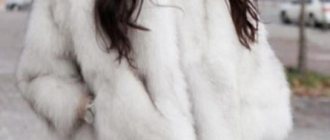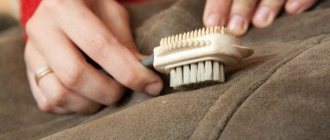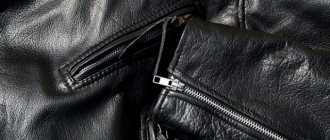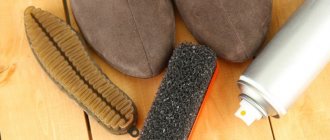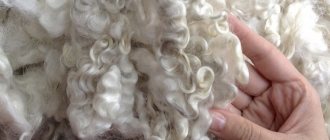Suede shoes never go out of style. The unique style and grace of this material are used in the manufacture of shoes for any season. In winter, caring for the presented material requires knowledge of several nuances. Although many people are afraid of purchasing suede shoes, they are actually a practical, durable material. In order for it to retain its original appearance for a long time, you need to know a few secrets for caring for this fabric.
During the cold season, close attention must be paid to cleaning and protecting shoes. During this period, snow and slush can ruin delicate material. How to care for suede shoes in winter? The advice of experienced experts will help with this. They will show you how to carry out this process simply and effectively.
Purpose of suede
When buying yourself a new pair of boots or boots made of suede, first of all you need to clearly understand its purpose. It should not be worn for a long time when going on long-distance hikes. This is rather a formal shoe option. Models created from this material look truly sophisticated and festive.
This delicate material does not tolerate moisture. Therefore, wearing it in autumn or spring is not recommended. But for a snowy winter it is quite suitable. If the weather outside is frosty, this shoe option will come in handy. How to care for suede shoes in winter? There's nothing complicated about it.
Suede shoes will complement a classic coat or a soft fur coat. Designers create many models of stylish, extravagant shoes from this material. They claim that every person should have at least one pair of boots made of this material.
How to store suede shoes
In order for suede products to last a long time, they must be stored correctly. Shoes should be thoroughly dried, cleaned, and special plastic shoes or crumpled newspaper should be inserted into them. It is advisable to choose a dark, cool place for storage.
Do not store suede products in plastic bags to avoid the appearance of fungus or mold; use shoe boxes or a special shoe cabinet. Place moth repellent nearby.
High tops should not be folded or wrinkled, otherwise “creases” and stripes will remain.
Actions upon purchase
First of all, it should be noted that there is natural and artificial suede. The second variety is somewhat inferior to the first in its qualities. But it also requires no less careful care. Suede needs proper protection.
Before putting on a new pair of boots for the first time, they should be wiped with a dry cloth made of soft material. A brush that is not too hard is also suitable for these purposes.
Then you need to treat the material with a water-repellent agent. When considering the question of how to care for artificial suede shoes in winter, it should be noted that the same actions are performed with them as with natural material.
Nanospray is best suited as a water-repellent agent. It needs to be sprayed over the entire surface of the material. It should become slightly damp. After this procedure, the shoes are left to dry for about 12 hours. The protective layer will need to be restored periodically. This will protect the shoes from moisture, dirt, and saline solutions.
Winter period
Caring for suede shoes in winter does not require much effort and time. Coming home from a walk on a frosty day, the snow is simply shaken off your boots. To do this, you can use a brush or soft flannel cloth.
Cleaning is done very carefully. You can't put any effort into this. Otherwise, the fibers will close together. The appearance of the shoes will be irretrievably lost.
When considering how to properly care for suede shoes in winter, you need to pay special attention to the process of drying them. After removing snow from the surface of the material, it must be left to dry. Under no circumstances should you place shoes close to a radiator or other heater. The room should be warm, but the high temperature will also spoil the appearance of the material.
Some features of courtship
The general rules for caring for suede boots, boots, shoes and sandals are the same: each time after use, cleaning, drying, and treatment with protective agents is necessary. The nuances vary depending on the season and type of shoe.
in winter
In winter, it is especially important to treat boots with a water-repellent agent, which will protect the delicate material from wet snow, dirt, and road chemicals. New shoes are coated three times, then applied in advance before each trip outside. After use, the shoes are dried away from radiators, cleaned and the pile straightened.
Artificial material
For artificial, as well as for natural suede, it is imperative to use water-repellent agents before going outside. After returning, the shoes are dried away from the battery and cleaned with a brush. Even if there is no visible dirt, the bristles will raise the pile and give the shoes a neat look.
Shoes
The shoes that are worn in the summer, and most often these are shoes and sandals, suffer the most from dust. Every time after going outside, shoes should be cleaned by brushing off the dust with a soft cloth. After drying the shoes naturally, they are cleaned with a brush, the pile is lifted and treated with a protective agent.
Boots
To extend the life of suede boots, you need to pay attention to cleaning and drying the shoes after each use. Moisture from inside the boot can be removed using crumpled paper; this will also prevent deformation when drying.
Cleaning brush
When studying the technology of how to care for suede shoes yourself at home, you need to pay attention to the acceptable brush options. To clean lint leather after the first walk, you will need to purchase a special porous material. This sponge brush has high rigidity.
It is used in combination with a special foam cleaner. This will allow you to quickly remove the top layer of dust in dry weather.
To remove greasy deposits, you should get a special eraser or a brush with rubberized teeth. You may also need a crepe cleaner. After its use, the surface becomes velvety. For convenience, small brushes are available for sale that combine the two types of cleaners presented above.
For deep cleaning, use a special flannel brush with coarse bristles.
Features of shoes made of natural suede
Shoes made from natural suede are durable. In addition, it does not allow moisture to pass through and warms the foot well. It is made from elk, deer and roe deer skins, treating the skin with fish, seal or bone fat. The tanning process is long and complex, so such material cannot be cheap. But velvety boots or shoes will decorate any legs.
Make sure that the store does not sell you artificial suede, the shoes from which smell not like leather, but like glue and paint. Please note that a suede substitute will not warm you in winter frosts, and in such shoes you will immediately get your feet wet.
Removing dirt
There are many proven methods for caring for suede boots. There are different cleaning methods. It all depends on the degree of pollution. The worst thing is if dirt or moisture gets on the material. In this case, you will have to work hard.
Do not clean shoes while they are wet. Before the procedure, the material must be thoroughly dried. To remove stains, you need to use special suede products. In this case, even an ordinary stationery eraser is used.
Foam cleaner removes stains well. It is sold in aerosol packaging. This product removes even deeply absorbed dirt. To do this, the product must be applied to the shoes, distributing it evenly over the surface with a flannel cloth (without rubbing). When the product dries after a few minutes, it is removed along with the dirt.
Features of the material
Suede is a natural material that is obtained from the skins of small livestock by suedeing, that is, fat tanning. Such shoes and boots look expensive and elegant, the feet are warm and comfortable, and the skin “breathes” due to the breathability of the material. The popularity of suede is due to its characteristics such as softness, ductility, velvety and thinness.
Softness
Natural high-quality suede is very soft and pleasant to the touch, which is why it is used for sewing jackets, dresses, gloves, accessories, and shoes. Soft shoes do not cause discomfort when worn.
ductility
As a result of processing, suede acquires the property of ductility. The advantage of this feature is that even a slightly tight boot will stretch and fit on the foot, taking a comfortable shape. A negative consequence of ductility is the irreversible deformation of the material if handled incorrectly.
Velvety
Natural suede is velvety on both sides - front and back. The presence of pile adds difficulty when caring for the material: dust and dirt accumulate between the piles, the velvety surface can harden, cake or become shiny and lose its appearance. If you run your hand over the pile, it changes direction - this is the difference between natural suede and artificial suede.
Subtlety
The material is thin and light, but despite this, it retains heat well. Thanks to this, it is not cold in winter boots made of natural suede. At the same time, in summer, your feet will not feel hot in light sneakers made of thin, breathable suede. Shoes and sandals look great; the thinness of the material allows you to create interesting dress shoes with unusual decor.
Pile raising
To understand how to properly care for suede shoes in winter, you must also consider the procedure for raising the pile. This must be done when abrasions and shiny spots begin to appear on the surface of the material. To do this, you will need a cotton swab with ammonia. Worn areas are treated with the presented product. Then the pile is lifted using a special or office eraser.
You can also use the steam method. You need to hold the shoes over a pan of boiling water for several minutes. Next, the surface is treated with a soft cloth. If the pile is steamed, it instantly takes on its original appearance. A similar procedure is also performed after cleaning the material.
Color restoration
When considering how to care for suede shoes in winter, it is necessary to learn a technique that allows you to restore the color of the material. Such an unpleasant phenomenon as fading occurs as a result of prolonged exposure to sunlight on boots or shoes. Therefore, special aerosols are used to restore the brightness and richness of the color of shoes. They are selected according to the shade of the shoes.
Before the procedure, the material is cleaned and dried well. Then evenly distribute the paint from the can over the entire surface. Afterwards, the shoes are dried well again and the pile is lifted with an eraser. Such products have a gentle effect on the material.
Knowing how to care for suede shoes in winter, you can maintain their spectacular appearance for a long time. Anyone can perform such simple procedures. Stylish, fashionable boots will delight their owner with their impeccable appearance for a long time to come.



